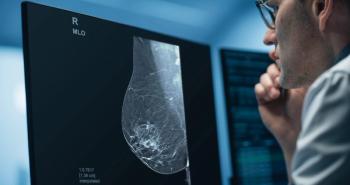
|Slideshows|May 19, 2015
Breast Mass, Skin Nodules
Author(s)Doaa Ibrahim Hasan, MD
Case History: 65-year-old woman with right upper outer quadrant painless mass.
Advertisement
Case History: 65-year-old woman with right upper outer quadrant painless mass and complaints of multiple skin nodules and brown skin patches since childhood.
Newsletter
Stay at the forefront of radiology with the Diagnostic Imaging newsletter, delivering the latest news, clinical insights, and imaging advancements for today’s radiologists.
Advertisement
Advertisement
Advertisement
Trending on Diagnostic Imaging
1
RSNA: CCTA Study Reveals Link Between Common Air Pollutants and Coronary Artery Stenosis
2
RSNA: Ultrasound Study Reveals Vascular Complications Associated with Cosmetic Fillers
3
The Potential of Mammography Image-Based AI Models for Assessing Risk: An Interview with Constance Lehman, MD
4
Video: Could an Emerging MRI Contrast Agent Be a Viable Option for Pediatric Patients?
5




























